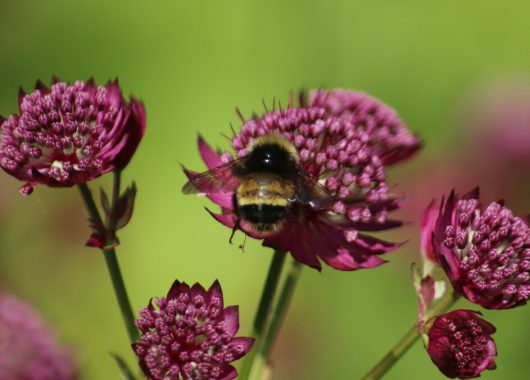Why Are Bees Attracted to Flowers?
Guide or Summary:Floral NectarPollen as a Protein SourceColor and OdorFlower StructureSeasonal AvailabilityHuman-Aided PollinationFloral NectarBees are natu……
Guide or Summary:
- Floral Nectar
- Pollen as a Protein Source
- Color and Odor
- Flower Structure
- Seasonal Availability
- Human-Aided Pollination
Floral Nectar
Bees are naturally drawn to flowers for a single, yet critical reason: nectar. Nectar is a sweet, energy-rich substance produced by the flowers to attract pollinators like bees. This liquid serves as a primary food source for bees, providing them with the necessary energy to fuel their foraging activities. The high sugar content of nectar makes it an irresistible reward for bees, compelling them to visit flowers repeatedly.
Pollen as a Protein Source
Apart from nectar, bees are also attracted to flowers for the pollen they carry. Pollen is a protein-rich substance found in the reproductive parts of plants, and it plays a vital role in the reproductive cycle of many flowering plants. When bees collect nectar from flowers, they inadvertently pick up pollen on their bodies, which they then transfer to other flowers as they move from one plant to another. This process facilitates cross-pollination, enabling plants to produce seeds and reproduce.

Color and Odor
The visual and olfactory cues provided by flowers also play a significant role in attracting bees. Bees have highly developed color vision and can detect a wide range of colors, including ultraviolet patterns that are invisible to the human eye. Many flowers exhibit vibrant colors and intricate patterns that are designed to attract bees. Additionally, the distinct and alluring scents emitted by flowers serve as powerful attractants for bees. Different flowers produce various scents, which bees can detect using their acute sense of smell.
Flower Structure
The physical structure of flowers also contributes to their attractiveness to bees. Bees are naturally attracted to flowers with corolla (petals) that are easily accessible and easy to land on. The corolla often forms a tubular shape that guides bees directly to the nectar and pollen-producing parts of the flower. Moreover, the anthers (the male reproductive part) and the stigma (the female reproductive part) are typically located in strategic positions that facilitate easy access for bees.

Seasonal Availability
The seasonal availability of flowers also plays a crucial role in attracting bees. Bees are naturally programmed to forage for food during the spring and summer months when flowers are abundant and in bloom. During these months, bees can access a wide variety of flowers, ensuring a continuous supply of nectar and pollen. This seasonal abundance of flowers provides bees with a reliable food source, enabling them to sustain their populations and thrive during the warmer months.
Human-Aided Pollination
In addition to their natural attraction to flowers, bees are also often introduced to gardens and agricultural fields by humans for pollination purposes. Bees play a crucial role in the pollination of many crops, including fruits, vegetables, and nuts. By intentionally placing bees in proximity to flowering plants, humans can enhance crop yields and improve the nutritional value of the produce.

In conclusion, bees are attracted to flowers for a variety of reasons, including the availability of nectar and pollen, the visual and olfactory cues provided by flowers, and the physical structure of the flowers. The seasonal availability of flowers and human-aided pollination further contribute to the attraction of bees to flowers. By understanding these factors, we can appreciate the essential role that bees play in the pollination of flowers and the broader ecosystem.